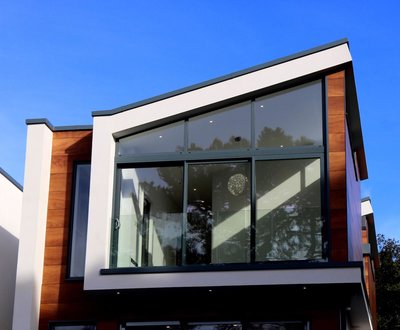24/08/2020 | Sell my property
What documents must be provided for the sale of a property?
If you wish to sell a property it is necessary to collect certain documents so that the notary can prepare the deed of sale and your potential buyer has all the information he needs. Here is a list of what you will need to provide.
For more readability, we have classified the documents by type.
Legal documents:
⦁ Extract from the Land Register : this document should be requested from the Land Registry Office of the canton where your property is located. In practice, the Land Register corresponds to a series of registers (ledger, journal, supporting documents, plans) that contain a description of the property, historical information on the owner(s) and on the real rights encumbering the property. These rights in rem are commonly referred to as easements, such as the right of way.
⦁ Cadastral and area plan: these documents are to be requested from the surveyor of the Land Registry Office. The cadastre contains all the geographical information relating to the property offered for sale as well as the main public law restrictions on land ownership, i.e. laws and ordinances that restrict the use of a property (restrictions relating to noise, national roads, proximity to an airport, etc.).
The area plan defines the building areas as well as the number of floors allowed.
⦁ Private law agreements: these agreements are part of the supporting documents to be requested from the Land Registry Office. If the General Ledger is used to guarantee the existence of a right to the property, the supporting documents (in particular previous contracts of sale) provide additional information on the conditions for exercising these rights.
⦁ Building fire insurance policy: you will need to obtain a copy from your insurance company.
Technical documents:
⦁ Building plans on a scale of 1:100 (floor plans, cutting plans, facades): if your property has been modified, the history of the work done must also be displayed.
⦁ Description of the construction: type of property, architecture, year of construction, number of rooms, floors and parking spaces, surface areas, presence of a terrace, garden, with or without facing walls, equipment and its age if relevant, special features, type of heating, etc…
⦁ Map of the municipality/ site plan: these plans should reflect relevant information about the commune, its infrastructures, the proximity of your property to schools, public transport, shops, etc….
⦁ Photos of your property: be sure to present up-to-date, quality photos that will appeal to your potential buyers. If you do not have the soul of a photographer, do not hesitate to contact a professional.
Financial documents:
⦁ Cadastre of property charges : the amount of any property tax (some cantons in fact do not levy any) is also particularly interesting information for the buyer which must appear in the sale file.
⦁ Information on financing: you will have to provide information on the loan obtained from the bank for the acquisition of your property.
Technical diagnostics:
What are the mandatory diagnostics in case of property sale?
⦁ The safety certificate of the low-voltage electrical installation: it is mandatory. The electrical diagnosis of your installation must have been made for less than 5 years. If the certificate is older, or if for some reason you do not have it, you will need to have it established by an accredited professional.
⦁ Energy diagnosis (CECB) is mandatory in certain cantons: the Cantonal Energy Certificate of Buildings and allows to establish the energy balance of a dwelling. The evaluation is carried out by an expert.
⦁ Asbestos diagnosis: this document is not required. But if your property was built before 1991 (when asbestos was banned in Switzerland), it is likely that this information will be of interest to your buyer.
The specific case of ownership by floor:
In the Ownership By Floor (PPE) everyone owns his own house and co-owns the common areas he enjoys. The documents to be provided are as follows:
⦁ Documents establishing that you are the owner (the deed drawn up by the notary) and the plans and description of the building;
⦁ Regulations relating to co-ownership: these are the operating and administrative regulations of the building;
⦁ Minutes of the last meeting of co-owners;
⦁ List and amount of incidental expenses: these are the expenses of the co-ownership, such as the maintenance of common areas, lighting, snow removal, etc.; List and amount of the accessory costs: these are the expenses of the co-ownership, such as the maintenance of common areas, lighting, snow removal, etc.
Compiling a sales file that is complete and accurate is the very first step in the property sale process. Firstly, all these documents will be necessary to produce an initial estimate to the set a correct property price. Then, they need to be provided to a notary in order to close the transaction.
Organising paperwork for the sale of your property may seem as a complicated, tedious and error-prone task but this step is strictly indispensable for a succseful sale of any real estate. When in doubt, call one of Lookmove partner agents who will answer all your possible questions and will make sure that you have a complete sales file.
GET HELP FROM A PROFESSIONAL IN YOUR REGION
- Aargau properties for sale
- Appenzell Outer Rhodes properties for sale
- Appenzell Innerrhoden properties for sale
- Basel-Landschaft properties for sale
- Basel-City properties for sale
- Bern properties for sale
- Fribourg properties for sale
- Geneva properties for sale
- Glarus properties for sale
- Graubünden properties for sale
- Jura properties for sale
- Lucerne properties for sale
- Neuchâtel properties for sale
- Nidwalden properties for sale
- Obwalden properties for sale
- Saint Gallen properties for sale
- Schaffhausen properties for sale
- Schwyz properties for sale
- Solothurn properties for sale
- Thurgau properties for sale
- Ticino properties for sale
- Uri properties for sale
- Valais properties for sale
- Vaud properties for sale
- Zug properties for sale
- Zurich properties for sale
- Liechtenstein properties for sale
- Zürich properties for sale
- Geneva properties for sale
- Basel properties for sale
- Lausanne properties for sale
- Bern properties for sale
- Winterthur properties for sale
- Lucerne properties for sale
- St. Gallen properties for sale
- Lugano properties for sale
- Biel/Bienne properties for sale
- Thun properties for sale
- Bellinzona properties for sale
- Köniz properties for sale
- Fribourg properties for sale
- La Chaux-de-Fonds properties for sale
- Schaffhausen properties for sale
- Chur properties for sale
- Vernier properties for sale
- Uster properties for sale
- Sion properties for sale
- Neuchâtel properties for sale
- Carouge GE properties for sale
- Emmen properties for sale
- Zug properties for sale
- Yverdon-les-Bains properties for sale
- Dübendorf properties for sale
- Aargau rental properties
- Appenzell Outer Rhodes rental properties
- Appenzell Innerrhoden rental properties
- Basel-Landschaft rental properties
- Basel-City rental properties
- Bern rental properties
- Fribourg rental properties
- Geneva rental properties
- Glarus rental properties
- Graubünden rental properties
- Jura rental properties
- Lucerne rental properties
- Neuchâtel rental properties
- Nidwalden rental properties
- Obwalden rental properties
- Saint Gallen rental properties
- Schaffhausen rental properties
- Schwyz rental properties
- Solothurn rental properties
- Thurgau rental properties
- Ticino rental properties
- Uri rental properties
- Valais rental properties
- Vaud rental properties
- Zug rental properties
- Zurich rental properties
- Liechtenstein rental properties
- Zürich rental properties
- Geneva rental properties
- Basel rental properties
- Lausanne rental properties
- Bern rental properties
- Winterthur rental properties
- Lucerne rental properties
- St. Gallen rental properties
- Lugano rental properties
- Biel/Bienne rental properties
- Thun rental properties
- Bellinzona rental properties
- Köniz rental properties
- Fribourg rental properties
- La Chaux-de-Fonds rental properties
- Schaffhausen rental properties
- Chur rental properties
- Vernier rental properties
- Uster rental properties
- Sion rental properties
- Neuchâtel rental properties
- Carouge GE rental properties
- Emmen rental properties
- Zug rental properties
- Yverdon-les-Bains rental properties
- Dübendorf rental properties


